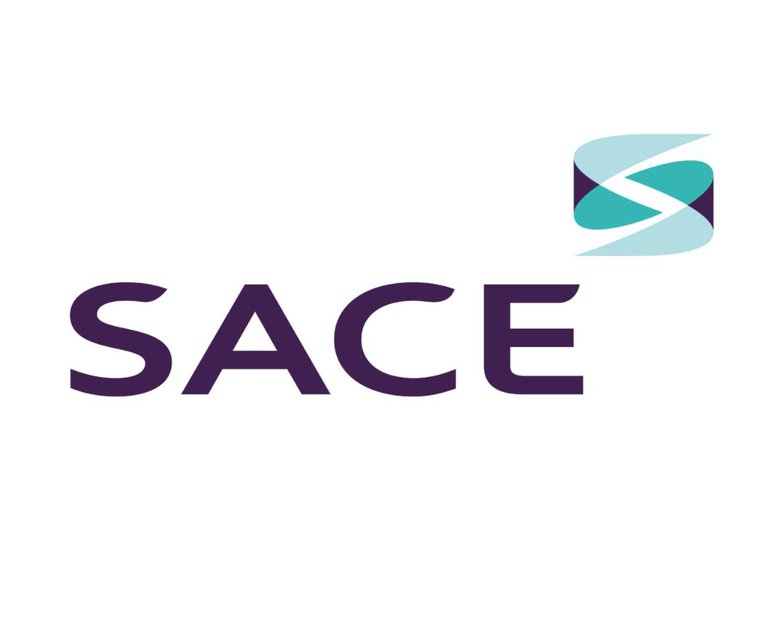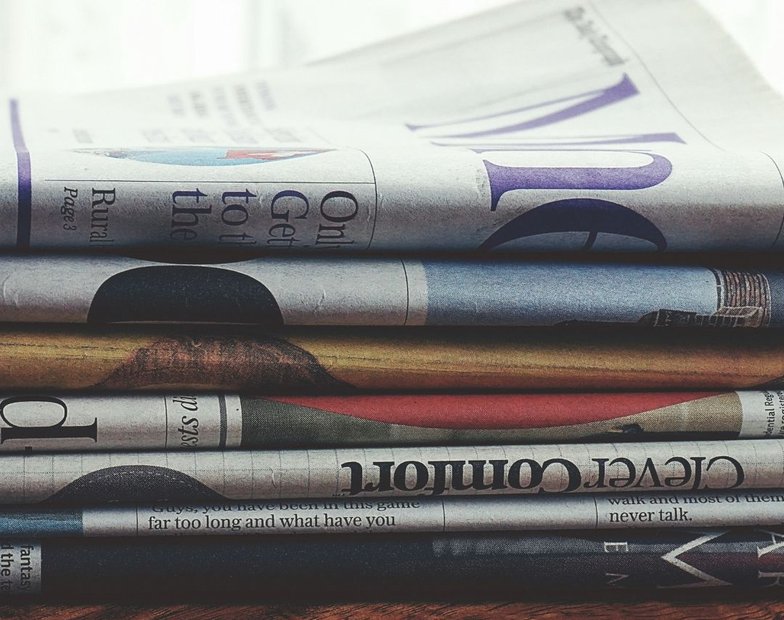Maliha Shoaib argues in an article on @voguebusiness: "Brands are casting 'diverse' models. But they're still not challenging Eurocentric beauty norms" [Vogue]. The catwalks are becoming more diverse, but casting decisions are still filtered through a Eurocentric lens. Vogue asks models, designers and casting directors how to break down barriers to meaningful change.
As this season’s fashion weeks showed, a cast of all-white, ultra-thin models is no longer the norm on the runway. But scratch beneath the surface, and the industry is still largely built on a narrow definition of “beauty” — one that views Eurocentric features as the paradigm.
Models of colour often have narrow noses, light eyes, caramel skin and looser hair texture. Dark skinned models are aestheticised and exoticised, and can be made to seem almost alien-like. Plus-size models must have hourglass figures, flat stomachs and sharp jawlines.
“There are models that consider skin bleaching when they see their counterparts are lighter than them and getting more work. Or they manipulate their features, or go on dangerous diets,” says 23-year-old model James Corbin, who walked for SS Daley during London Fashion Week this season. He says he wanted to bleach his own skin when he was younger.
Model diversity was one of the first ways that brands engaged with diversity and inclusion after the rise of the Black Lives Matter (BLM) movement in 2020 held a mirror up to fashion’s exclusionary ways. Casting Black models is a quicker and more visible fix than overhauling company culture or hiring practices.
However, while model diversity has improved, casting decisions are still ticking the race or size diversity box without straying too far from Western ideals, experts agree. Incidences of “colourism” (a preference for lighter skinned people of colour) and “featurism” (preference for Eurocentric features) in modelling mirror how people within the same marginalised group are treated differently in the industry.
“You’re so conditioned to think of beauty in a certain way as a designer,” says Nepalese-American designer Prabal Gurung, who has been pushing for greater inclusion for years. “It’s important for us to question ourselves — why do we like a certain kind of beauty or people or style — and check it doesn’t have a colonial lens, because 99.9 per cent of the time it does. You can decide whether to decolonise or not, but I think it’s important to have that conversation, especially in the fashion industry because we can’t call ourselves the forefront of tastemaking if we have such a myopic idea of beauty and taste.”
“It takes a lot to not subscribe to those standards, and to make a conscious stand against it,” adds British-Nigerian designer Tokyo James, who showed this Milan Fashion Week with an all-Black model cast to highlight the diversity within Blackness. “If we really do want the changes to happen, it needs to not just be the visibility from the runway, it needs to be the board of directors where there is diversity
The Eurocentric paradigm goes beyond modelling and seeps into the ways that marginalised groups navigate workplace environments in fashion. “Women of colour are afforded some privilege as long as they stay in code with white supremacist and Eurocentric ideals of how they should behave and look, but those privileges are taken away the moment they move away from them,” says diversity and inclusion consultant Tskenya-Sarah Frazer. This can include how they wear their hair, or speaking or behaving in a specific way.
Frazer has seen first-hand that slimmer and lighter-skinned women are given opportunities that their larger and darker counterparts aren’t, and points to studies that show a corresponding impact on pay equity. “If they deviate away from [the Eurocentric gaze], they are penalised; they are told that they don’t look ‘professional’, or have issues with their ‘tone’ or ‘need to integrate more with their teams’,” says Frazer.
Smashing the hourglass ceiling
Beauty standards are formed through familiarity — in other words, representation, explains Shafee Hassan, founder of Qoves, a facial aesthetics consultation company. “The familiarity effect is very important for beauty standards because it shapes our ability to be good judges of beauty.” The overexposure of European features makes it harder to measure the attractiveness of a person from a South Asian or African background, he adds.
Colonial history hasn’t just shaped the lack of racial diversity in fashion, it’s also shaped body standards, say experts. “If you go back to Renaissance art in Europe, women were full figured, but as globalisation started to take off just before the transatlantic slave trade, all of these missionaries went to places like Africa and Asia and saw that people were different to them and wanted to [distinguish themselves] to make the other more grotesque to separate them from the archetype of beauty,” explains Frazer.
Brazilian designer Karoline Vitto’s Fashion East debut this season featured only plus-size models. “[Body standards] are a product of colonialism, it’s a way for us to look at the coloniser as the ideal or ultimate goal and not look at ourselves as worthy of that much value,” she says.
Even when plus-size models are used, they still conform to a Western notion of beauty — think hourglass figures, flat stomachs. “We’re probably creating a new [unrealistic] beauty standard without realising it. That’s something that I feel very aware of as a brand,” says Vitto. She uses Alvanon mannequins, which mimic real human anatomy that have four different types of bust-to-waist-to-hip proportions to create a range of samples in different sizes — not just the typical hourglass shape — and casts models around those sizes.
Brands have faced pushback when casting outside the body standards. “There is a sad [assumption] that a certain body type sells clothes better than other types,” says Puppets and Puppets co-founder Carly Mark, whose casting choices have often been considered untraditional by industry watchers. “There are some people in my office that nudge me on [how diverse casting decisions will impact sales], but I don’t care. If someone on my team says ‘I don’t know if that body’s gonna sell that dress’, I shut [that perspective] down very quickly.”
Beyond the runway
It will take more than putting a few Black or plus-size models on the runway to widen the fashion industry’s narrow version of diverse representation. “Visual representation is important — it works. But it’s not meaningful,” says Anita Chhiba, consultant, casting director and founder of South Asian community platform Diet Paratha. “To incite meaningful change [you need to have] a diverse team on the inside — with casting, with production teams, with workplaces, you need to have representation on the inside and the outside.”
Having people from similar communities behind-the-scenes can make models from marginalised backgrounds feel more comfortable on set, Chhiba adds, and that goes for the team behind casting, too. “To make an impact it often takes someone that’s in the community to understand how to bring new faces and new aesthetics into the fold,” agrees Ezinne Mgbeahuruike, founder of casting and consulting agency Ezylivin Studio.
Modelling agencies should confirm that hair and makeup teams are able to work with a variety of skin tones and hair textures, and that the brand has sizes that will fit larger models. “When you are managing talent, you are taking on a big responsibility and signing up to care for someone and ensure they are safe and in a good headspace,” says Lucy Greene, founder and director of talent agency Anti-Agency. This can include ensuring marginalised models aren’t underpaid, says Rare Select Models founder Romany Francesca. “I try to push to know everybody’s pay grade. This is something that should be disclosed because brands should want to pay everyone rightfully.”
It’s also about giving models from marginalised backgrounds opportunities beyond the runway, such as in lookbooks and e-commerce campaigns, “which is where [models] make their money,” says Charlie Clark-Perry, founder of inclusive modelling agency SUPA.
“Sometimes Charlie is given a brief for someone with a ‘stand out look’ and even though they’ve not asked for a plus-size model he’ll put my image forward,” says Corbin. “That’s how you push and change things from behind the scenes – you challenge people’s thoughts about a whole demographic they’ve missed, especially if it’s not been asked for.”
People from marginalised backgrounds face everyday prejudices that brands and agents should be aware of. “[Disability activist and model Emily Barker and] my assistant, who is a person of colour, were ignored by five black cabs on the way to the venue that picked up white women five metres down the street,” says casting director Emma Matell, who worked with newcomer Sinéad O’Dwyer this season. These prejudices differ in each fashion capital, too. “I’ve got Black and Indian models who refuse to go to Milan because they don’t want to go on public transport and get stopped two or three times a day to have their bags searched,” says Clark-Perry.
Authenticity, not edginess
Emerging brands are leading the way with casting outside the typical standards. “If you’re a smaller brand, when you don’t have access to the big models, in a weird way it gives you freedom because you can show these bigger figures in the industry how it should be done,” says London-based designer Feben, who has noticed that bigger brands seem to look to her shows for inspiration and poach the models she has showcased. “It’s like they’re scared to do it at first until they see how it works for [smaller brands].”
“Big brands have the finances and resources to do something extraordinary and they’re choosing to have the same girls on rotation,” says casting director Chloe Rosolek, who worked with Feben this season. “It’s frustrating because imagine if Feben had the budget to go to different countries around the world and scout new faces? Instead [big brands] choose the same nepotism children or token models that are fitting these ‘diversity’ boxes, but it isn’t really changing anything.”
Smaller brands are trying to push beauty standards with their casting decisions but acknowledge that it's the biggest brands that hold the most power. “It would be a lie to say that people open their minds and say this is beautiful — no, they talk about [our casting decisions] because they are different,” says Filippo Giuliani, business partner and art director of emerging Italian womenswear brand Marco Rambaldi.
The buzz around inclusive casting is for the wrong reasons, experts say. “I don’t feel comfortable with the idea that diversity or diverse bodies or people are edgy,” says Frazer. “If you think about those models on the runway, they make up the global majority. So why is it that from our [Western] gaze that we’ve made it seem like a trendy thing?”
It’s not about being edgy, it’s about being authentic and connecting with consumers, she explains. “There is a growing demand for brands to demonstrate inclusivity not only in the ways in which you make your clothes, but the ways in which you present your clothes and who gets to wear your clothes,” says Frazer. “If you want to survive the next 50 or 100 years, it’s important for you to get on board now because people are going to stop buying from brands that don’t represent their values. You’ve got to make sure people can see themselves replicated in your brand.”



